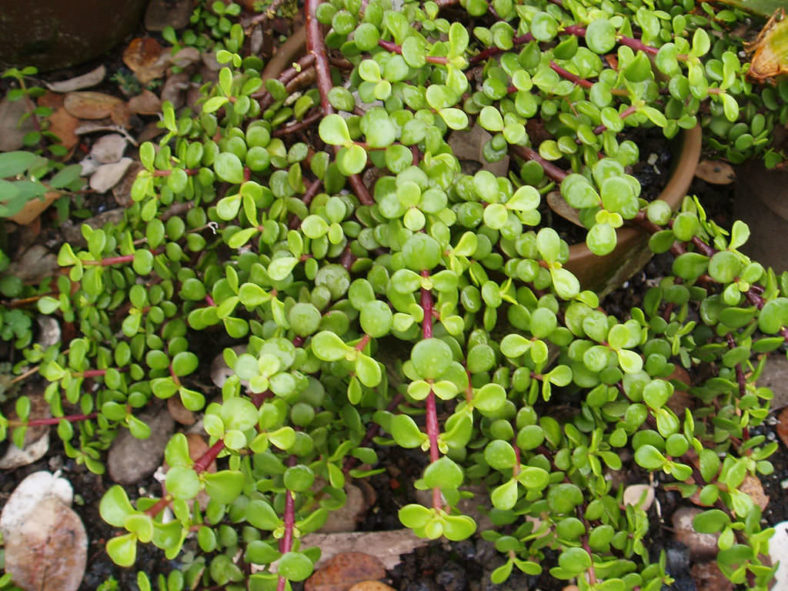Portulacaria afra, commonly known as Elephant Bush or Elephant Food, is used worldwide as a succulent garden shrub and a popular bonsai subject. It is a perfect addition to your indoor or outdoor succulent garden. This plant is also known as Dwarf Jade or Miniature Jade, but it is unrelated to Crassula ovata. The small leaves are thick, fleshy, rounded, green to yellowish, and held on red stems. They are edible with a pleasant acidic taste. Elephant Bush also comes in variegated forms.
As the common name "Elephant Food" suggests, this succulent is eaten by elephants, but it also feeds goats and tortoises. It is also used in Southern African cuisine, where it is added to salads, soups, and stews to impart a sour flavor.
Elephant Bush can grow outdoors in USDA Plant Hardiness Zones 9b through 11b. However, like any other succulent, it has its own problems, including leaf drop.
Overwatering and Underwatering
Overwatering is the primary cause of failure in Elephant Bush because it invites fungal rot disease. Leaves of the overwatered plant become swollen and discolored. The leaf drop may occur in severe cases. To save an overwatered plant, repot it after removing any rotten roots.

The leaf drop can also occur if the Elephant Bush is underwatered. Not enough water causes the leaves to dry up and sometimes drop off. This succulent should be watered more frequently in the summer and less often in the winter. Let the soil dry between waterings. In winter, provide just enough water to prevent the leaves from shriveling.
Soil Issues
The leaf drop may also occur if the soil lacks proper nutrients or adequate drainage qualities. Use specially formulated potting soil for succulents or create your own mix. Adequate water drainage should be a priority for any soil mix for succulents. Adding perlite can help with drainage and aeration if you use regular potting soil. Use a balanced fertilizer no more than twice a summer.
Changes in Light, Temperature, and Humidity
Sudden changes in light, temperature, and humidity can all contribute to the leaf drop in Elephant Bush. This succulent prefers full sun, and if relocated to an area of less sunlight, it can start dropping leaves.
The same goes for temperature. If you move your plant from a cooler area to a much warmer area or vice versa, the plant may react similarly and begin dropping leaves. Severe changes in humidity can have similar effects. Ideal daytime temperatures for Elephant Bush are 70°F to 85°F (21°C to 29°C), and ideal nighttime temperatures for it are 50°F to 55°F (10°C to 13°C). Avoid placing the plant near a heating or air conditioning vent to prevent it from drying out. Humidifiers may be used during the winter to maintain humidity levels.
Pests and Diseases
Pests and diseases can weaken a plant enough to cause leaf drop, potentially. Pests that can cause the most damage to leafy succulents are whiteflies and scale moths. Other pests that can be found include spider mites, mealybugs, and fungus gnat larvae. Diseases that affect Elephant Bush the most are fungal. These diseases can be prevented through proper watering, adequate water drainage, and effective pest control.
Source: sfgate.com
Links
- Back to genus Portulacaria
- Succupedia: Browse succulents by Scientific Name, Common Name, Genus, Family, USDA Hardiness Zone, Origin, or cacti by Genus